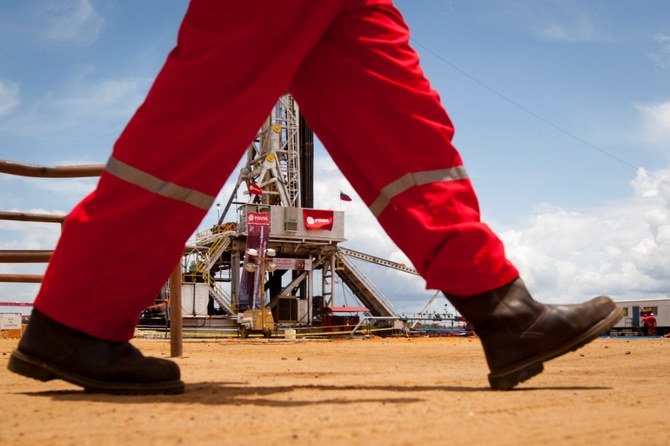
- ARAB NEWS
- 05 Jul 2025

Two weeks ago, we witnessed high drama when the price for the West Texas Intermediate (WTI) May contract temporarily went into negative territory — by as much as $37 per barrel for a short time.
This jolt to the industry occurred despite a historic OPEC+ deal, which will take out 9.7 million bpd as of this month. Norway too will cut 13 percent of its production, or 250,000 bpd, in June, easing down to 134,000 bpd for the remainder of the year. G20 countries also committed to take out another 5 million bpd notionally — albeit not in the form or direct cuts, but rather as a result of attrition as demand fell off a cliff.
Against the backdrop of countries gradually coming out of lockdown, things have relaxed somewhat since the heady days in mid-April. Brent appreciated by $8 per barrel over the course of last week. It reached $25.82 per barrel in early European trading.
Over the past few months gasoline and kerosene were particularly hard hit, because commuters stayed at home in the US and elsewhere while 65 percent of aircraft remain grounded to this day. Diesel fared better owing to fairly resilient truck traffic hauling essentials.
Markets were worried that global storage capacity was nearing tank top, which was the case in Cushing, Oklahoma (hence the deterioration of WTI) as well as in parts of the Gulf, India and China. Some analysts indicate that the latest satellite data suggests more of a 65 percent usage in other regions. This data is only partially reliable as it cannot reveal the situation of closed tanks and some other facilities.
At least falling demand is in part counterbalanced by production cuts, which should ease the tension
Cornelia Meyer
People are driving again in Texas to Wuhan; and even in Europe, where gasoline demand is up. In the UK gasoline demand for the week of April 26 was down 75 percent compared to a year ago, which is bad, but still better than late March when it was down 83 percent.
In other words, the demand picture is slowly and tentatively rebounding — albeit at very low levels compared to before the crisis. The IEA forecasts that demand will still be down by 25.8 million bpd in May and 14.6 million bpd in June, which is better than the 29 million bpd for April, yet still dismal. Compare this to global demand for oil, which stood at 100 million bpd before the COVID-19 virus spread across the world.
Things are improving for sure: Supply is taken out just as demand is going up. Saudi Arabia even started cutting production earlier than per agreement, which had a psychological effect.
The million-dollar question is what to expect from the economic recovery. Will it be linear or will countries have to go back into lockdown if case levels resurge while they open their economies? Another question is how the pandemic influences demand patterns. Citi estimates that air travel will not reach 2019 levels until 2022 or thereafter. BP CEO Bernard Looney is concerned that more people working from home going forward will have a lasting impact on the demand for gasoline.
This is a moment of truth for the oil industry. Never before have we seen such radical demand destruction. The industry is also experiencing the second price shock in the span of five years. Let us not forget that it took oil two decades to recover from the low oil prices of the 1980s.
This time is different though: Overlay the ecological agenda over the COVID-19-induced drop in demand and the picture looks far from rosy. It is true that we do not yet know how the economic contraction will affect the green agenda in many countries, as priorities may shift. At the same time energy from renewable sources beats fossil fuels in many areas — albeit not in transportation. The European oil majors seem undeterred in their shift to renewables despite the crisis.
Pressure has been relieved with the combination of aggressive production cuts and gradual increase in demand. However, a lot will depend on the shape and speed of the recovery, as well as consumer preferences.
If the recovery is steep, which it might not be, we could see prices rebound sharply when shut-in production cannot be ramped up quickly enough to meet rising demand. That is stargazing, though, and quite some time in the future.
All we can say at this point is that demand is at historic lows and it is uncertain how quickly growth will return. At least falling demand is in part counterbalanced by production cuts, which should ease the tension. It will be some time yet until we are back to normal.
Twitter: @MeyerResources